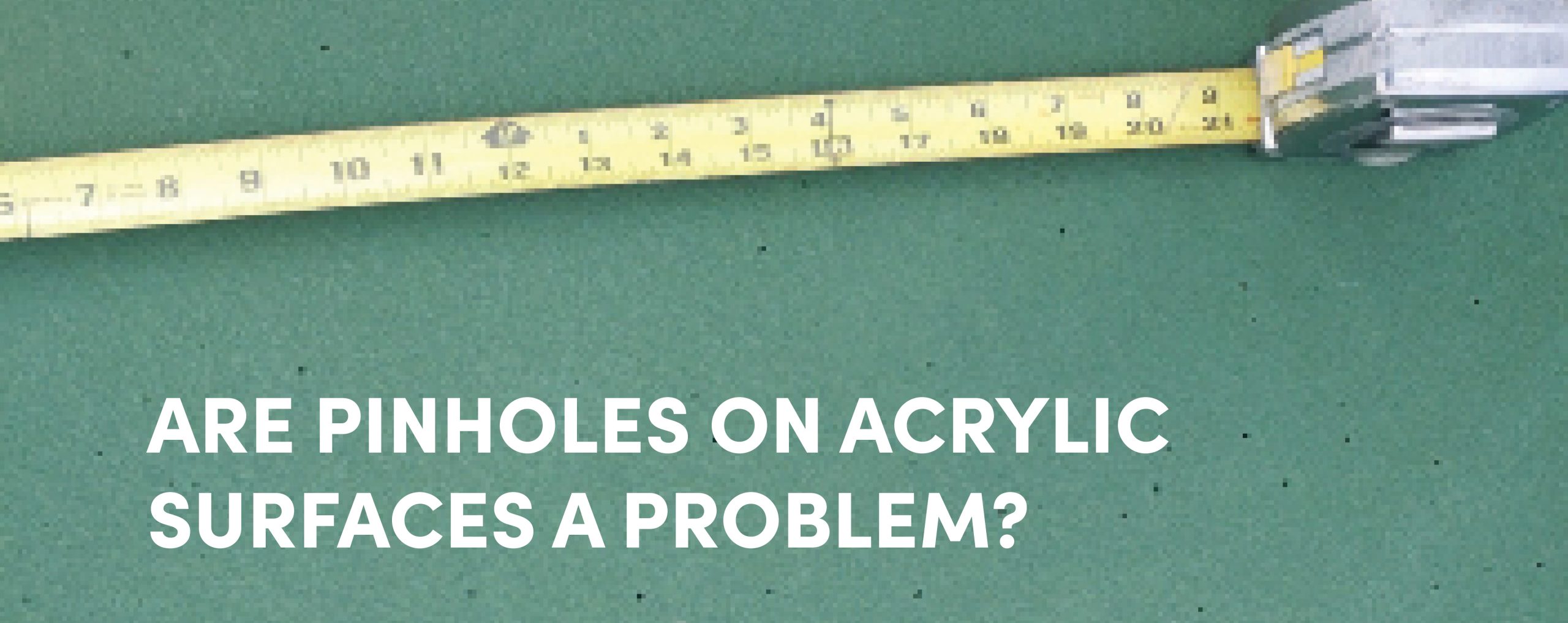
All courts have some measure of pinholing and they are generally cosmetic in nature. Some pinholes are more pronounced than others, but basically any coating that is applied horizontally will have them.
Pinholes occur when a tiny bubble forms in the surface coating and then bursts as the coating is drying, leaving behind a small crater or cavity. The most common cause of these bubbles is heat: the surface is significantly warmer than the surface coatings that are being applied over it and very small “volcanoes” start to pop up as the coatings are drying. It is more prevalent on very hot days.
Certain asphalt courts, which are very “bony” or rough are also more prone to more pinholes. Almost all tennis courts have some minor pinholing and it should not affect the long-term durability or quality of the court.
In general, conditions that can affect the formation of pinholes in the surface finish include:
- The texture of the surface underlayment. Courser textures are more prone to pinholes. Some of the current asphalt mixes provide a coarser texture than some of the older available mixes.
- The drying conditions during application. Hotter weather tends to increase the potential for pinholes, as the higher surface temperature causes the rapid evaporation of water from the coating mix.
- When mixing the paint, air bubbles and foaming can form; these may result in the formation of pinholes.

When pinholes are a concern to the owner, people often request an additional coat of color to attempt to hide them. What happens is that the new acrylic coating passes over the existing pinhole, trapping a small pocket of air, which may in turn become a new, slightly smaller pinhole. You can minimize and hide the appearance of pinholes, but you can never completely eliminate them.


